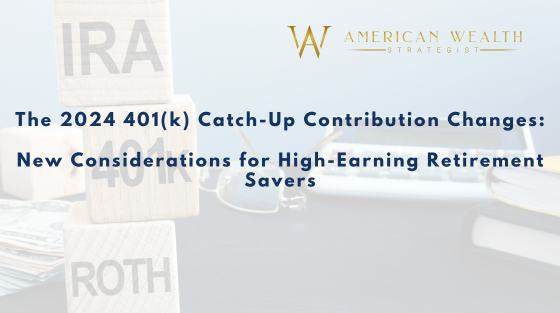The retirement savings landscape is evolving, and high-earning savers need to stay on top of these changes to optimize their savings strategy. As we approach 2024, significant alterations to the 401(k) catch-up contribution laws are on the horizon. These changes have unique implications for high earners, and in this post, we’ll break down the vital details.
The Existing Framework of 401(k) Catch-Up Contributions
Let’s first refresh our understanding of the current rules. A 401(k) plan traditionally allows employees to contribute pre-tax dollars towards their retirement savings. As of 2023, the standard contribution limit stands at $20,500, with an additional catch-up contribution of $6,500 allowed for those 50 years old or above.
The 2024 Law: A Shift for High Earners
The coming year brings a noteworthy change for high-earning individuals. The new 2024 law will require high earners—those earning more than $145,000 per year—to make their catch-up contributions after taxes. Despite this shift, the limit for catch-up contributions will also increase, enabling individuals to put away more for their golden years.
The Impact on High Earning Employees
The change in tax treatment for catch-up contributions is a double-edged sword. On one hand, high earners now have the potential to contribute more to their retirement funds. On the other hand, these contributions will need to be made after taxes, which could affect take-home pay and short-term financial planning. It is essential for high earners to understand these dynamics and adjust their strategies accordingly.
Redefining Your 401(k) Strategy
Given the incoming changes, high earners must reconsider their retirement savings approach. Consulting with a financial advisor could be advantageous to understand how to best navigate the new law. Tailoring your strategy, considering your income level, retirement objectives, and risk tolerance, will help ensure you can maximize the benefits of the revised contribution limits.
Final Reflections
The 2024 amendments to 401(k) catch-up contributions bring a significant shift in retirement savings law, particularly for high earners. These changes underline the need for dynamic retirement planning that adapts to evolving laws and personal financial situations.
It’s essential to remember that these changes are just part of the retirement savings puzzle, and their efficacy hinges on how effectively they’re utilized. Financial literacy, strategic planning, and a deep understanding of your retirement objectives continue to be key to successful retirement saving.
As we edge closer to 2024, high earners should embrace the upcoming change as an opportunity to reassess their retirement saving strategy. Adaptation and planning are the name of the game in the world of retirement savings. Let’s make the most of the new 401(k) catch-up contribution law. If you have questions surrounding this update, please reach out to Mike Miller at mike.miller@american-wealth.com.




